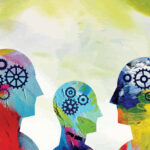Now Reading: Autism: Understanding The Symptoms, Causes, and Support Strategies
-
01
Autism: Understanding The Symptoms, Causes, and Support Strategies
Autism: Understanding The Symptoms, Causes, and Support Strategies

Autism, or Autism Spectrum Disorder (ASD), is a neurodevelopmental condition that affects how individuals perceive the world, communicate, and interact with others. Characterized by a wide range of symptoms and abilities, autism is not a one-size-fits-all condition—it’s a spectrum, meaning every person with autism has a unique set of strengths and challenges.
Globally, autism is more common than many realize; for instance, in the United States alone, 1 in 36 children is diagnosed with ASD, according to the Centers for Disease Control and Prevention (CDC). Yet, despite its prevalence, autism remains widely misunderstood, often shrouded in myths and misconceptions.
Understanding ASD is not just about raising awareness—it’s about fostering inclusivity, empathy, and support for individuals who experience the world differently. For too long, society has viewed autism through a lens of limitation, but the truth is far more empowering: autism is not a limitation; it’s a different way of experiencing the world.
By deepening our understanding of ASD, we can create environments that celebrate neurodiversity and provide the mental health support that individuals with autism and their families truly need. Whether you’re a parent, educator, or simply someone who wants to learn more, this article will guide you through the essentials of autism—from its symptoms and causes to actionable strategies for support and inclusion. Let’s embark on this journey to better understand and embrace the unique perspectives that autism brings to our world.
What is Autism?

Autism Spectrum Disorder (ASD) is a neurodevelopmental condition that affects how individuals communicate, interact, and process information. It is called a “spectrum” disorder because it encompasses a wide range of symptoms, abilities, and levels of severity. No two people with autism are exactly alike—some may require significant support in their daily lives, while others may live independently and excel in specific areas. This diversity is what makes understanding autism both complex and fascinating.
At its core, ASD is characterized by challenges in social communication, such as difficulty understanding nonverbal cues, maintaining conversations, or forming relationships. Individuals with autism may also exhibit repetitive behaviors, like hand-flapping, rocking, or a strong preference for routines. Additionally, many people with autism experience sensory sensitivities, where they may be over- or under-responsive to sounds, lights, textures, or other sensory inputs. These characteristics can vary widely, making each person’s experience with autism unique.
By recognizing autism as a neurodevelopmental condition with a broad spectrum of manifestations, we can move beyond stereotypes and better appreciate the individuality of those living with ASD. Whether it’s through tailored therapies, inclusive education, or simply fostering understanding, acknowledging the key characteristics of autism is the first step toward creating a more supportive and inclusive world for everyone on the spectrum.
Signs and Symptoms of Autism
Autism Spectrum Disorder (ASD) manifests differently across various stages of life, and recognizing the signs early can lead to timely intervention and support. Here’s a breakdown of the symptoms of autism by age group:
Early Childhood

In young children, ASD often becomes noticeable through developmental delays and behavioral differences. Key signs include:
- Delayed speech or language skills: A child may not speak by 16 months or may lose previously acquired words.
- Lack of eye contact: Difficulty making or maintaining eye contact during interactions.
- Repetitive movements: Actions like hand-flapping, rocking, or spinning objects.
- Limited social engagement: Little interest in playing with peers or sharing enjoyment with others.
- Sensory sensitivities: Over- or under-reaction to sounds, lights, textures, or smells.
These early signs of ASD are crucial for parents and caregivers to recognize, as early intervention can significantly improve outcomes.
Adolescence
As children with ASD grow into their teenage years, their symptoms may evolve, often becoming more nuanced:
- Difficulty with social interactions: Struggles with understanding social cues, making friends, or engaging in group activities.
- Intense focus on specific interests: A deep, sometimes obsessive interest in particular topics or activities.
- Repetitive behaviors: Continued reliance on routines or rituals, with distress when these are disrupted.
- Communication challenges: Difficulty understanding sarcasm, humor, or abstract concepts.
- Emotional regulation issues: Increased anxiety, frustration, or meltdowns in response to changes or sensory overload.
For adolescents, these symptoms can impact their ability to navigate school, friendships, and the transition to adulthood.
Adulthood
In adults, autism often presents unique challenges, particularly in navigating independence and social expectations:
- Challenges with employment: Difficulty finding or maintaining jobs due to social or communication barriers.
- Struggles in relationships: Trouble forming or sustaining romantic or platonic relationships.
- Independent living difficulties: Challenges with managing daily tasks, finances, or household responsibilities.
- Continued sensory sensitivities: Persistent over- or under-reaction to sensory stimuli.
- Mental health concerns: Higher likelihood of experiencing anxiety, depression, or other co-occurring conditions.
Understanding ASD in adults is essential for providing appropriate support and fostering independence.
Why Recognizing Symptoms Matters
Recognizing the symptoms of ASD at any age is the first step toward understanding and support. Whether it’s identifying early signs of autism in children, addressing social challenges in adolescents, or helping adults navigate daily life, awareness is key to creating a more inclusive and supportive environment for individuals with ASD. By paying attention to these signs, we can ensure that everyone on the spectrum receives the care and opportunities they deserve.
Causes and Risk Factors of Autism
The exact cause of Autism Spectrum Disorder (ASD) remains unknown, but research suggests that a combination of genetic factors and environmental influences likely plays a role in its development. Understanding these potential causes and risk factors can help dispel myths and provide clarity for families and individuals affected by autism.
Genetic Factors
Genetics are believed to be a significant contributor to autism. Studies have shown that:
- Family history: ASD tends to run in families, and siblings of individuals with autism are more likely to be diagnosed with the condition.
- Gene mutations: Certain genetic mutations or chromosomal conditions, such as Fragile X Syndrome or Rett Syndrome, are associated with a higher risk of ASD.
- Complex inheritance: Autism is likely influenced by multiple genes rather than a single gene, making its genetic basis complex and varied.
While genetic factors in autism are well-documented, they do not tell the whole story, as not all individuals with genetic predispositions develop autism.
Environmental Influences
Environmental factors during pregnancy or early childhood may also contribute to the development of autism. These include:
- Prenatal exposure: Exposure to certain chemicals, medications, or infections during pregnancy may increase the risk. For example, maternal use of valproic acid (an anti-seizure medication) has been linked to a higher likelihood of ASD.
- Advanced parental age: Older parents, particularly fathers, may have a slightly higher risk of having a child with autism.
- Birth complications: Factors such as low birth weight, premature birth, or oxygen deprivation during delivery may play a role.
- Toxic exposures: Some studies suggest that exposure to air pollution or heavy metals during pregnancy could be a contributing factor.
It’s important to note that these environmental influences are not definitive causes but rather potential risk factors that may interact with genetic predispositions.
Debunking Myths
Unfortunately, misinformation about ASD has led to harmful myths, particularly regarding its causes. One of the most persistent and debunked myths is that vaccines cause autism. Extensive research, including studies by the Centers for Disease Control and Prevention (CDC) and the World Health Organization (WHO), has consistently shown no link between vaccines and autism. Spreading accurate information is crucial to ensuring public health and supporting individuals with ASD.
Diagnosis and Evaluation of ASD
Diagnosing Autism Spectrum Disorder (ASD) is a detailed and multi-step process that involves careful observation, standardized assessments, and collaboration among specialists. Early and accurate diagnosis is crucial for accessing the right support and interventions. Here’s an overview of the autism diagnosis process:
1. Developmental Screenings
The first step in identifying ASD often begins with developmental screenings, which are typically conducted during routine pediatric check-ups. These screenings help identify early signs of developmental delays or atypical behaviors. Key components include:
- Parent questionnaires: Tools like the Modified Checklist for Autism in Toddlers (M-CHAT) ask parents about their child’s behavior, communication, and social interactions.
- Observations by healthcare providers: Pediatricians may observe the child’s play, communication, and interactions during visits.
- Milestone tracking: Comparing the child’s development to typical milestones for their age.
If a screening raises concerns, the next step is a more in-depth evaluation.
2. Comprehensive Evaluations by Specialists
A formal ASD evaluation is conducted by a team of specialists, which may include developmental pediatricians, child psychologists, neurologists, or speech-language pathologists. This comprehensive assessment typically involves:
- Detailed developmental history: Gathering information about the child’s behavior, communication, and social skills from parents or caregivers.
- Behavioral observations: Specialists observe the child in structured and unstructured settings to assess social interactions, communication, and repetitive behaviors.
- Standardized diagnostic tools: These tools provide objective measures to support the diagnosis. Examples include:
- ADOS-2 (Autism Diagnostic Observation Schedule): A gold-standard tool that involves structured activities to evaluate social and communication skills.
- ADI-R (Autism Diagnostic Interview-Revised): A detailed interview with parents about the child’s developmental history and behavior.
- CARS (Childhood Autism Rating Scale): A rating scale based on observed behavior and parent reports.
3. Multidisciplinary Approach
ASD diagnosis often requires input from multiple professionals to ensure a holistic understanding of the individual’s strengths and challenges. This team may assess:
- Speech and language development: To identify delays or atypical communication patterns.
- Cognitive abilities: To understand intellectual functioning and learning styles.
- Sensory processing: To evaluate sensitivities or differences in sensory experiences.
- Motor skills: To assess coordination and physical development.
4. Diagnosis and Follow-Up
After the evaluation, the team will determine whether the individual meets the criteria for ASD as outlined in the Diagnostic and Statistical Manual of Mental Disorders (DSM-5). If a diagnosis is confirmed, the next steps include:
- Developing a personalized support plan: Tailored interventions such as speech therapy, occupational therapy, or behavioral therapy.
- Connecting families with resources: Providing information about support groups, educational programs, and community services.
- Ongoing monitoring: Regular follow-ups to track progress and adjust interventions as needed.
Why Early Diagnosis Matters
Early autism diagnosis can significantly improve outcomes by enabling timely access to interventions that support communication, social skills, and independence. Whether it’s through developmental screenings or comprehensive evaluations, understanding how autism is diagnosed empowers families to take the first step toward helping their loved ones thrive.
By demystifying the diagnostic process, we can ensure that individuals with ASD receive the understanding and support they need to reach their full potential.
Treatment and Support Strategies for Autism
While there is no cure for Autism Spectrum Disorder (ASD), a range of evidence-based interventions can significantly improve the quality of life for individuals with autism. These therapies and strategies are designed to address the unique needs of each person, helping them develop communication, social, and life skills. Here’s an overview of the most effective autism treatment options and the importance of early intervention:
1. Behavioral Therapy
Behavioral therapies are among the most widely used and researched interventions for ASD. The most prominent approach is Applied Behavior Analysis (ABA), which focuses on improving specific behaviors and skills through positive reinforcement. Key aspects of ABA therapy include:
- Breaking down skills into small steps: Teaching complex tasks by breaking them into manageable components.
- Data-driven progress tracking: Monitoring improvements and adjusting strategies as needed.
- Individualized programs: Tailoring interventions to meet the unique needs of each individual.
ABA therapy has been shown to improve communication, social skills, and adaptive behaviors, making it a cornerstone of autism treatment.
2. Speech and Language Therapy
Many individuals with ASD experience challenges with communication, making speech and language therapy a critical component of their support plan. This therapy focuses on:
- Improving verbal communication: Helping individuals develop spoken language skills.
- Enhancing nonverbal communication: Teaching the use of gestures, sign language, or communication devices.
- Social communication skills: Practicing turn-taking, maintaining conversations, and understanding social cues.
Speech therapy can be particularly effective when started early, as it helps children build a strong foundation for communication.
3. Occupational Therapy
Occupational therapy (OT) helps individuals with ASD develop the skills needed for daily living and independence. This therapy addresses:
- Sensory sensitivities: Helping individuals manage over- or under-reactions to sensory stimuli.
- Fine and gross motor skills: Improving coordination, handwriting, and physical activities.
- Self-care skills: Teaching tasks like dressing, eating, and personal hygiene.
OT is especially beneficial for individuals who struggle with sensory processing or motor challenges, enabling them to navigate their environments more effectively.
4. The Importance of Early Intervention
Research consistently shows that early intervention can have a profound impact on the development of children with ASD. Starting therapies as early as possible—ideally before the age of three—can lead to significant improvements in:
- Communication and language skills.
- Social interactions.
- Cognitive and adaptive functioning.
Early intervention not only benefits the child but also empowers families with tools and strategies to support their loved one’s growth.
5. Support for Families and Caregivers
Caring for a loved one with ASD can be both rewarding and challenging. Providing support for families and caregivers is an essential part of autism support strategies. This includes:
- Parent training programs: Teaching caregivers how to implement behavioral and communication strategies at home.
- Support groups: Connecting families with others who share similar experiences.
- Respite care: Offering temporary relief for caregivers to prevent burnout.
- Educational resources: Providing information about autism, therapies, and community services.
By supporting caregivers, we create a stronger foundation for individuals with autism to thrive.
Living with Autism: Mental Health Considerations

Living with Autism Spectrum Disorder (ASD) often involves navigating not only the core symptoms of autism but also co-occurring mental health conditions. These challenges can significantly impact an individual’s quality of life, making it essential to address both autism and mental health together. Here’s a closer look at some common co-occurring conditions and the importance of mental health support for individuals with ASD:
1. Anxiety
Anxiety is one of the most common mental health conditions experienced by individuals with autism. The unpredictable nature of social interactions, sensory sensitivities, and changes in routine can all contribute to heightened anxiety. Symptoms may include:
- Excessive worry or fear.
- Avoidance of certain situations or activities.
- Physical symptoms like rapid heartbeat or sweating.
Providing strategies to manage anxiety, such as cognitive-behavioral therapy (CBT) or mindfulness techniques, can help individuals with autism feel more in control and reduce stress.
2. Depression
Depression is another frequent co-occurring condition, particularly among adolescents and adults with autism. Feelings of isolation, difficulty forming relationships, and challenges with communication can contribute to depressive symptoms, such as:
- Persistent sadness or irritability.
- Loss of interest in activities.
- Fatigue or changes in sleep patterns.
Addressing depression often requires a combination of therapy, medication, and social support to help individuals build connections and find joy in their daily lives.
3. ADHD (Attention-Deficit/Hyperactivity Disorder)
Many individuals with ASD also experience symptoms of ADHD, such as:
- Difficulty focusing or staying organized.
- Impulsivity or hyperactivity.
- Challenges with time management.
Managing ADHD in individuals with autism may involve behavioral interventions, structured routines, and, in some cases, medication to improve focus and reduce impulsivity.
The Importance of Mental Health Support
Mental health support is a critical component of care for individuals with ASD. Addressing co-occurring conditions like autism and anxiety, autism and depression, and ADHD can significantly improve overall well-being and quality of life. Key considerations for providing effective mental health support include:
- Individualized approaches: Tailoring interventions to meet the unique needs of each person.
- Therapeutic strategies: Using evidence-based therapies like CBT, mindfulness, or social skills training.
- Collaborative care: Involving families, educators, and mental health professionals to create a comprehensive support network.
- Creating safe spaces: Ensuring environments are sensory-friendly and emotionally supportive.
Myths and Misconceptions About Autism
Autism Spectrum Disorder (ASD) is often misunderstood, leading to harmful stereotypes and misinformation. Dispelling these autism myths is crucial for fostering understanding, acceptance, and support for individuals with autism. Here are some of the most common misconceptions about autism and the facts that counter them:
1. “Autism is caused by bad parenting.”
The Myth: One of the most damaging and outdated myths is that autism results from poor parenting or a lack of emotional bonding.
The Truth: ASD is a neurodevelopmental condition with roots in genetic and environmental factors. Decades of research have shown that parenting style does not cause autism. Blaming parents not only perpetuates stigma but also distracts from the real need for support and understanding.
2. “People with ASD lack empathy.”
The Myth: A common stereotype is that individuals with autism are incapable of feeling or expressing empathy.
The Truth: While some people with autism may struggle to express empathy in conventional ways, this does not mean they lack it entirely. Many individuals with autism feel deeply and care intensely about others—they may simply express it differently. For example, they might show empathy through actions rather than words or struggle to interpret social cues that others find intuitive.
3. “Autism can be cured.”
The Myth: Some believe that autism is a disease that can be “cured” through treatments, therapies, or interventions.
The Truth: ASD is not a disease; it is a lifelong neurodevelopmental condition. While therapies and interventions can help individuals develop skills and manage challenges, there is no “cure” for autism—nor should there be. The goal is not to “fix” individuals with autism but to support them in thriving as their authentic selves. Embracing neurodiversity means recognizing the value and strengths that individuals with autism bring to the world.
Other Common Myths
- “Vaccines cause ASD.”: This myth has been thoroughly debunked by extensive scientific research. Vaccines are safe and do not cause autism.
- “All people with autism are savants.”: While some individuals with autism have exceptional skills in specific areas (e.g., math, music, or memory), this is not true for everyone. Autism is a spectrum, and abilities vary widely.
- “Autism only affects children.”: Autism is a lifelong condition. While symptoms may change over time, adults with autism continue to experience its effects and require support.
Why Dispelling Myths Matters
Misconceptions about autism can lead to stigma, discrimination, and missed opportunities for support. By addressing these autism myths, we can:
- Promote accurate understanding of autism.
- Encourage acceptance and inclusion.
- Advocate for evidence-based interventions and policies.
How to Support Someone with Autism
Supporting someone with Autism Spectrum Disorder (ASD) requires empathy, patience, and a willingness to adapt to their unique needs. Whether you’re a family member, friend, teacher, or colleague, there are practical steps you can take to create an inclusive and supportive environment. Here are some actionable tips on how to support autism effectively:
1. Practice Patience and Understanding
- Be patient: Individuals with autism may need more time to process information, respond to questions, or complete tasks. Avoid rushing them or showing frustration.
- Listen actively: Pay attention to their verbal and nonverbal cues. If they struggle to express themselves, give them space and time to communicate in their own way.
- Avoid assumptions: Don’t assume you know what they need or how they feel. Ask questions and be open to learning about their preferences and challenges.
2. Create a Sensory-Friendly Environment
Many individuals with autism experience sensory sensitivities, which can make certain environments overwhelming. Here’s how to create autism-friendly environments:
- Reduce sensory overload: Minimize loud noises, bright lights, and strong smells. Use soft lighting, noise-canceling headphones, or quiet spaces when needed.
- Provide sensory tools: Offer items like fidget toys, weighted blankets, or stress balls to help regulate sensory input.
- Respect personal space: Be mindful of physical boundaries and avoid unexpected touch unless it’s welcomed.
3. Encourage Communication in Their Preferred Way
Communication can be a significant challenge for individuals with autism. Supporting their preferred methods of communication is key:
- Use clear and simple language: Avoid sarcasm, idioms, or abstract phrases that may be confusing.
- Explore alternative communication methods: If verbal communication is difficult, consider using visual aids, sign language, or communication devices.
- Be supportive, not corrective: If someone communicates differently (e.g., using repetitive phrases or gestures), focus on understanding their message rather than correcting their delivery.
4. Foster Inclusivity and Acceptance
- Celebrate their strengths: Recognize and encourage their unique talents and interests, whether it’s art, music, technology, or another area.
- Promote social inclusion: Encourage peer interactions and create opportunities for meaningful connections, but respect their comfort level in social situations.
- Educate others: Help friends, family, and colleagues understand autism and how they can be supportive.
5. Provide Structure and Routine
Many individuals with autism thrive in structured environments. To support this:
- Establish predictable routines: Consistency can reduce anxiety and help them feel more secure.
- Use visual schedules: Visual aids like calendars or charts can help them understand what to expect throughout the day.
- Prepare for transitions: Give advance notice before changes in routine or new activities to help them adjust.
6. Advocate for Their Needs
- Collaborate with professionals: Work with therapists, educators, and healthcare providers to ensure they receive the right support.
- Encourage self-advocacy: Help them develop the skills to express their needs and preferences as they grow older.
- Be their ally: Stand up for their rights and ensure they have access to inclusive opportunities in school, work, and the community.
Conclusion
Autism Spectrum Disorder (ASD) is a complex and multifaceted condition that affects individuals in unique ways. From understanding the signs and symptoms of autism to exploring its potential causes and risk factors, we’ve delved into the importance of early diagnosis, effective treatments, and the need for mental health support. We’ve also debunked common autism myths and provided actionable tips on how to support autism through patience, sensory-friendly environments, and inclusive communication.
The journey of living with or supporting someone with autism is not without its challenges, but it is also filled with opportunities for growth, connection, and celebration of neurodiversity. By fostering understanding and creating supportive environments, we can help individuals with autism thrive and lead fulfilling lives.
If you suspect autism in yourself or a loved one, don’t hesitate to seek professional guidance. Early intervention and support can make a world of difference. Share this article to spread awareness and help others better understand autism. Together, we can build a more inclusive and compassionate world for everyone on the spectrum.





















Pingback: ADHD Uncovered: Understanding the Symptoms and Science Behind the Disorder. - The Oxymind
* * * Win Free Cash Instantly: https://saanvi-arts.com/?c38gdh * * * hs=1b4181bf90cab388cf687c25833c2e1b*
xagov2